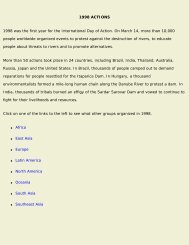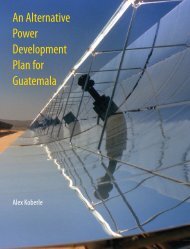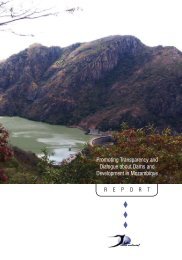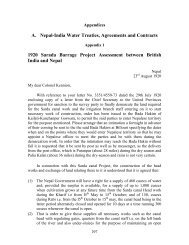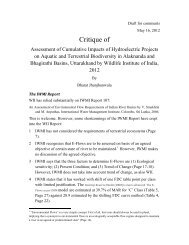Proposed Power Development Plan (PDP) 2012 - Palang Thai
Proposed Power Development Plan (PDP) 2012 - Palang Thai
Proposed Power Development Plan (PDP) 2012 - Palang Thai
- No tags were found...
Create successful ePaper yourself
Turn your PDF publications into a flip-book with our unique Google optimized e-Paper software.
<strong>Proposed</strong> <strong>Power</strong> <strong>Development</strong> <strong>Plan</strong> (<strong>PDP</strong>) <strong>2012</strong>and a Framework for Improving Accountability and Performance of <strong>Power</strong> Sector <strong>Plan</strong>ningYearGeneration from renewable energy<strong>PDP</strong> 2010 <strong>PDP</strong> <strong>2012</strong>EGAT SPP VSPP Cumu. Total EGAT SPP VSPP Cumu. Total2028 168 4,990 168 4,9902029 179 5,169 179 5,1692030 179 5,348 179 5,348* <strong>PDP</strong> <strong>2012</strong> assumes the same amount of renewable energy capacity addition as <strong>PDP</strong> 2010except for some adjustments for projects facing delays.Table 11: Generation fro m renewable energy in MW in the <strong>PDP</strong> 2010 and the <strong>PDP</strong> <strong>2012</strong>.RE<strong>PDP</strong>2010 Dependable Generation Purchase price of RE** (B/kWh)capacityMW GWh % adder total weighted pricebiomass*** 2,025 55% 9,756.45 78% 0.3 3.00 2.344biogas 121 21% 222.59 2% 0.3 3.00 0.053solar 922 21% 1,696.11 14% 6 8.70 1.182wind 672 5% 294.34 2% 3.5 6.20 0.146small hydro 69.3 40% 242.83 2% 0.8 3.50 0.068waste 157.5 20% 275.94 2% 2.5 5.20 0.115*Data source EPPO, http://www.eppo.go.th/power/pdp/page-7.html,updated 25 Feb 2010Cited source for dependable capacity: Study on DependableCapacity of RenewableEnergy Generation (in <strong>Thai</strong>), 2010**assume bulk price2.7 B/kWh***assume 50% biomass is from rice husks which has assumed plant factor of 70%while that of the rest is 40%3.908Table 12: Dependable cap acity assumptions used in <strong>PDP</strong> 2010 and <strong>PDP</strong> <strong>2012</strong>. These are used in calculatingenergy (GWh) output and costs of electricity from renewable energy.CogenerationCogeneration is considered a preferred resource option over centralized power plants due to its high efficiency. The<strong>PDP</strong> 2010 calls for investments of 16,670 MW of centralized gas-fired combined cycle generation while includingonly 7,024 MW of more efficient cogeneration. In contrast, the <strong>PDP</strong> <strong>2012</strong> gives priority to cogeneration over gascombined cycle gas turbines (CCGT) or coal-fired power plants if and when new capacity is needed. Typically thesize of each cogeneration capacity varies and depends on the steam requirement at the host factor. According toSPP regulations, no more than 90 MW of electricity export is accepted per plant. Here in the <strong>PDP</strong> <strong>2012</strong>, we added300 MW of cogeneration capacity per year in most years and 600 MW in the few years that more new capacityaddition is required. Table 13 shows the comparison of cogeneration capacity in the <strong>PDP</strong> 2010 vs. the <strong>PDP</strong> <strong>2012</strong>.24




